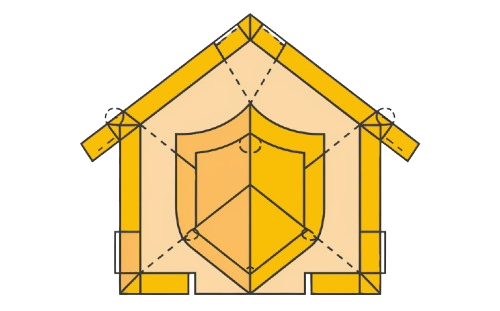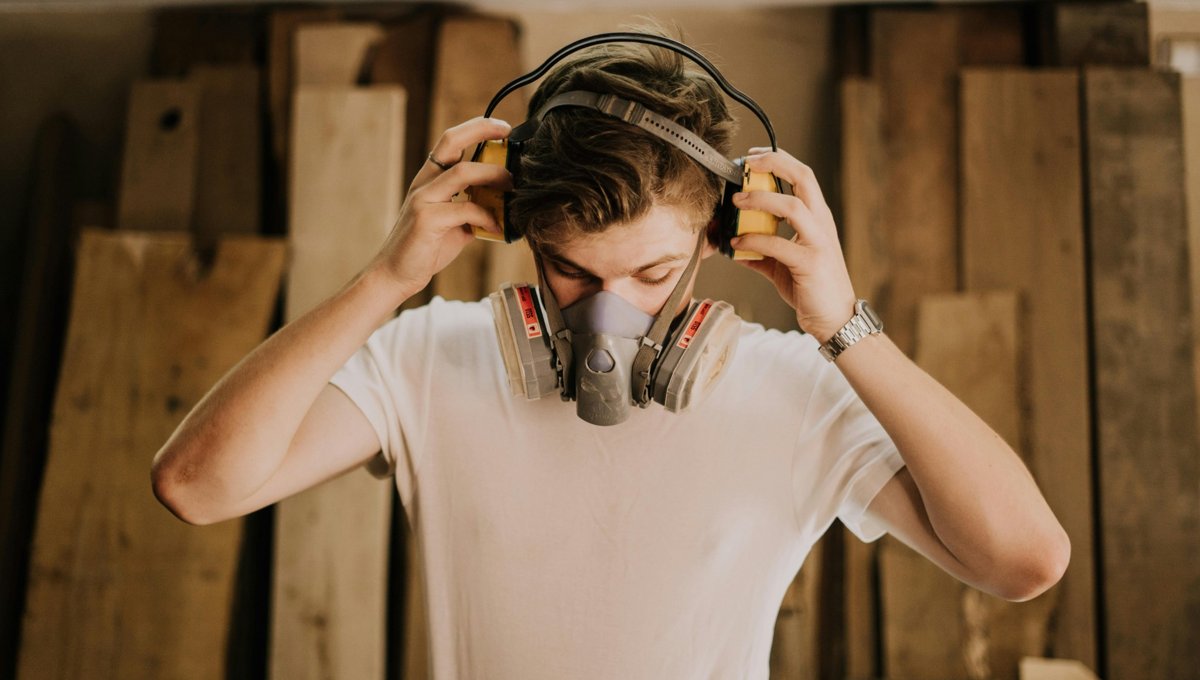Are you getting tired of hearing every little sound coming from the next room or outside your house? Perhaps it’s time to enjoy more quiet by using soundproofing spray foam in your home or office. Spray foam insulation is a common type of insulation you’ll find in houses, largely because of its effectiveness in making interior walls and exterior walls less hallow and more resistant to noise.
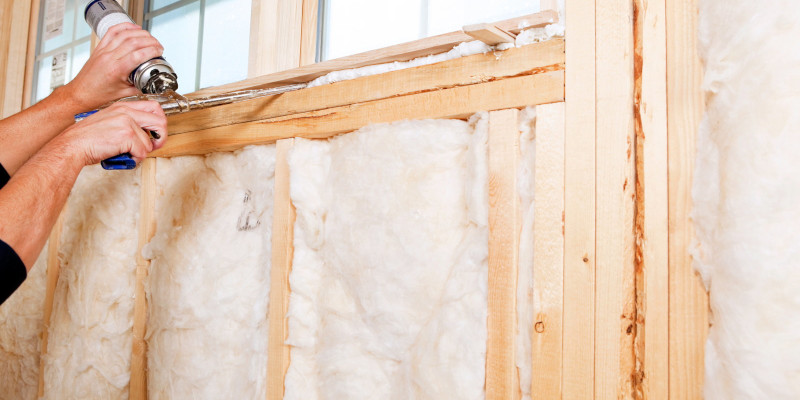
Is Spray Foam Good For Soundproofing
Many homeowners and office residents are going to take a look at whether spray foam is a good option for soundproofing. This type of insulation helps decrease sound transfer, effectively helping to insulate a space and provide a much quieter environment. Let’s discuss the science behind soundproofing and the benefits of spray foam sound insulation. Unlike other materials that might only remain effective for certain noises you hear, spray foam offers a comprehensive solution by adhering to open spaces and crevices where most sound leaks occur.
Types of Noise in Buildings
Impact vs. Airborne Noise: Identifying What Disrupts Your Peace
In any discussion about soundproofing, it’s essential to understand the types of noises we seek to control within the comfort of our homes and offices. The two types of noise that most often disturb our peace are impact and airborne noises. Airborne sound is any soundwave that travels across the air and is only stopped when it meets obstacles like a wall, window, or tree. These vibrations continue through the object, entering our spaces in a diminished form but still noticeable.
Impact noise, on the other hand, is generated when something strikes a surface within or around a structure. Common examples include footfall on hardwood or concrete, which can echo throughout a building, or a basketball bouncing on the driveway that reverberates in the same way. This type of noise is referred to as structural because it involves the physical structure of the building vibrating in response to impacts. Both types of noise extend into your living or office space, challenging to control without the right insulation and barriers. Understanding these nuances is crucial for effectively applying soundproofing measures to enhance the tranquility of your environments.
How Sound Ratings Help Control Noise
Understanding the Role of Sound Ratings in Insulation
Soundproofing decisions often hinge on understanding sound ratings, which are deeply influenced by personal and environmental factors. One key personal factor is age, which affects how we hear and listen. As people age, their range of hearing typically diminishes, usually moving beyond the ability to detect higher frequencies. This change makes certain sounds less audible, which can influence how effective soundproofing feels to different individuals. Normal hearing covers frequencies from about 20 Hz to 20000 Hz, with silence starting at zero decibels.
Daily sounds, such as leaves moving, might produce 10 to 20 decibels, while a quiet home or office usually stands at around 40 dB. More intense sounds, like street noise or party music, can quickly escalate to 75 to 80 decibels. Extreme noises, such as those from an engine, bass drum, or car horn, might reach a loud 130 dB.
Overview of Hertz, STC, and NRC
In terms of soundproofing metrics, Hertz (Hz) helps us determine the frequency of sound waves, which relates directly to what pitches we can hear. Meanwhile, Sound Transmission Class (STC) and Noise Reduction Coefficient (NRC) are critical ratings for evaluating soundproofing materials. STC determines how well a material can block various frequencies of sound from passing through barriers. On the other hand, NRC measures the amount of sound a material can absorb, enhancing the quality of space by reducing echoes and background noise.
Understanding Sound Transmission Class (STC)
Sound Transmission Class (STC) is a crucial metric used to measure and evaluate how effective various materials or combinations thereof are at reducing the transmission of sound. This rating specifically addresses the losses of sound energy as it passes through walls, ceilings, and other assemblies. STC values are measured in decibels (dB), focusing on a frequency range from 125 to 4000 Hz. A higher STC number indicates a lower amount of sound passing through the barrier, signifying better soundproofing capabilities. For example, a wall with a high STC rating will allow less noise from outside traffic or neighboring spaces to intrude into a quiet home or office environment.
The Role of Noise Reduction Coefficient (NRC)
Conversely, the Noise Reduction Coefficient (NRC) is a numerical system that measures the extent to which a material absorbs rather than reflects sound waves. The NRC provides an average value based on tested absorption across four different frequency bands: 250, 500, 1000, and 2000 Hz. The results are rounded to the closest 0.05, with the scale ranging from zero (no absorption) to 1.0 (complete absorption). Materials with a higher NRC rating are more effective at absorbing sound, which is particularly beneficial in reducing echoes and improving acoustic clarity within a space.
How Spray Foam Enhances Building Acoustics
Spray foam soundproof insulation utilizes polyurethane foam, a material known for its exceptional ability to reduce noise in buildings. This type of insulation is a popular choice for soundproofing because it not only helps absorb noise but also serves to dampen the sound coming from outside. When spray foam is applied to walls, roofs, ceilings, and floors, it creates a continuous barrier that significantly reduces sound transmission.
An excellent example of its effectiveness is how spray foam insulation can be used on floors to dramatically reduce noise between floors in a building. This makes it an invaluable resource in multi-story buildings where foot traffic and other activities on upper floors can disrupt those below. By filling and sealing every crack and crevice, spray foam ensures that both airborne and impact noise are minimized, making indoor environments quieter and more comfortable.
How Spray Foam Soundproof Insulation Enhances Acoustic Control
Spray foam soundproof insulation is an excellent choice for creating a serene environment within any home or building. This type of insulation works by forming a barrier that effectively stops noise from entering indoor spaces. It seals all gaps, holes, and leaks where sound might penetrate the structure, thereby preventing noise from leaving or entering the area. When spray foam is applied to walls, ceilings, roofs, and even basements, it expands to fill every crevice, which significantly reduces the transfer of soundwaves through these surfaces.
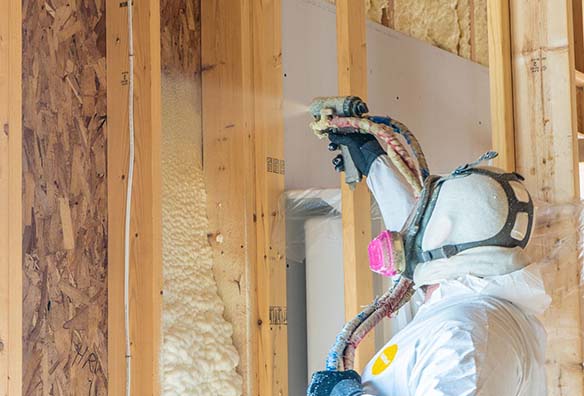
The material used for this insulation is typically a polyurethane foam, often combined with catalysts, fire-retardants, and surfactants to enhance its soundproofing qualities and durability. Spray foam comes in both open-cell and closed-cell options, where closed-cell foam provides a denser barrier, making it more effective at blocking higher frequencies of noise and air flow, thus enhancing the energy efficiency of the building. Open-cell foam, while less dense, is adept at absorbing and dampening sound, making it ideal for applications where noise reduction is a priority without the need for extensive thermal insulation.
Also Read: Is Spray Foam Insulation Flammable?
This flexibility makes spray foam an adaptable solution for areas like attics, where air and sound insulation can profoundly affect a home’s overall quietness and comfort.
Reducing Noise Pollution with Spray Foam Insulation
How Spray Foam Enhances Quietness in Homes and Offices
Spray foam insulation can significantly help reduce noise pollution by sealing off the spaces where noise typically enters a home or building. This type of insulation is particularly effective because it fills and seals hard-to-reach places that other types of insulation might miss, effectively blocking the transmission of noise through air leaks. Whether it’s the hum of city traffic or the buzz from nearby commercial areas, spray foam forms a solid barrier that prevents external sounds from entering your living or working space.
Additionally, the science of soundproofing supports the use of spray foam as a superior choice for those looking to quiet their environments. Spray foam works by absorbing soundwaves that would otherwise pass through gaps and edges in traditional building materials. As sound energy travels in waves through the air, it is transmitted outward from its source and vibrates against structural elements like walls and windows. When these soundwaves hit the spray foam, its dense and expansive properties reduce the intensity, making the noise less audible as you move away from the source.
This insulation method is not just about stopping air flow but also about creating a barrier that captures sound energy, enhancing both the quietness and overall energy efficiency of your space.
Exploring the Advantages of Spray Foam Soundproof Insulation
Enhancing Comfort and Reducing Energy Costs
Spray foam insulation is recognized for its exceptional ability to improve comfort in homes and offices by reducing unwanted noise from the surrounding environment. Whether you’re near a busy road or living in a noisy urban setting, spray foam helps to absorb the noise from outside, creating a more peaceful and comfortable living space. Beyond soundproofing, this insulation type also excels in energy efficiency. By regulating temperature and reducing the energy needed for heating and cooling systems, spray foam makes buildings more energy-efficient. It creates an air-sealed environment that minimizes air filtration, which can significantly lower utility bills and maintain a comfortable indoor climate year-round.
Noise Control and Moisture Management
Spray foam stands out for its ability to reduce noise transmission between rooms and floors, turning areas such as study rooms or home offices into quiet zones conducive to focus and relaxation. This sound insulation is effective for both walls and doors, providing an achievable solution for extensive noise control within any building layout. Additionally, this insulation type offers excellent moisture control, preventing moisture buildup that can lead to mold and mildew. By eliminating potential drafts and enhancing air quality, spray foam insulation supports a healthier and more durable home environment, addressing multiple concerns in one solution.
Comparing Types of Spray Foam for Soundproofing
Open-Cell and Closed-Cell Spray Foam
When choosing spray foam for soundproofing, it’s essential to understand the differences between the two types available: open-cell and closed-cell. Open-cell spray foam is characterized by its soft and flexible structure, with cells that are not completely closed. This porous nature makes it an excellent sound absorbent, ideal for reducing airborne noise due to its ability to trap sound waves within its open structure.
Conversely, closed-cell spray foam has cells that are completely closed, making the foam dense and rigid. This type of foam is particularly great for air sealing, providing a robust barrier against airflow and external noises. While closed-cell foam is more effective at blocking higher frequency sounds and ensuring better thermal insulation, it is less effective at absorbing low-frequency sounds, such as bass from music or rumbling engines.
Soundproofing Comparison: Open-Cell vs Closed-Cell
The choice between open-cell and closed-cell foam often depends on specific soundproofing needs. Open-cell foam is less rigid than closed-cell, allowing for some air and moisture infiltration, which contributes to its ability to absorb sound better. This makes it particularly suited for interior applications where sound dampening is crucial. On the other hand, closed-cell foam, with its ability to block more sound waves and provide significant air sealing, is often preferred in environments where external noise intrusion and energy efficiency are primary concerns.
Comparing Spray Foam to Rockwool and Fiberglass
When compared to other materials like Rockwool and fiberglass, spray foam insulation often emerges as a more beneficial choice for soundproofing due to its acoustic properties and the ability to expand and cover the entire surface area, including irregularly-shaped spaces. Rockwool and fiberglass are effective but can be difficult to cut and fit precisely, and they tend to settle over time, which can leave gaps and reduce their effectiveness. Spray foam’s capacity to expand and fill every hole and gap ensures that no areas are left uncovered, making it a more reliable and often easier solution for both soundproofing and thermal insulation needs.
Enhancing Soundproofing Beyond Basic Spray Foam Insulation
Integrating Additional Structural Methods for Noise Control
When considering soundproofing during the construction of a house, it’s essential to integrate certain insulation processes early on. One effective strategy is to build a decoupled 2-layer drywall system. This method involves creating a double-stud wall, where the studs on one wall are staggered or completely detached from those on the other wall. This decoupling technique helps to significantly reduce sound transmission through the walls by minimizing the points of contact that can transfer vibrations.
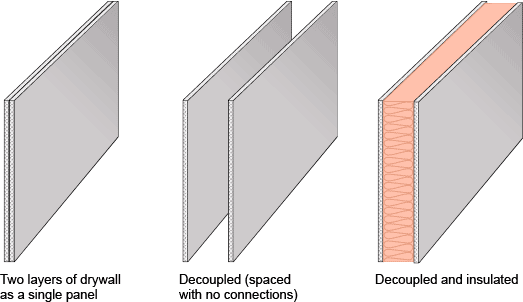
Employing Dual Drywall Layers for Enhanced Sound Reduction
Another approach is to install two sheets of drywall, instead of one, to add more mass to the walls. This additional barrier not only prevents sound from getting through but also improves the overall acoustic quality of the space. For even greater efficacy, using 5/8″ drywall instead of the more common 1/2″ in residential construction is advisable. Between these layers, sound control mineral wool—which is a bit thinner than regular materials—can be placed in the stud cavities to further increase insulation.
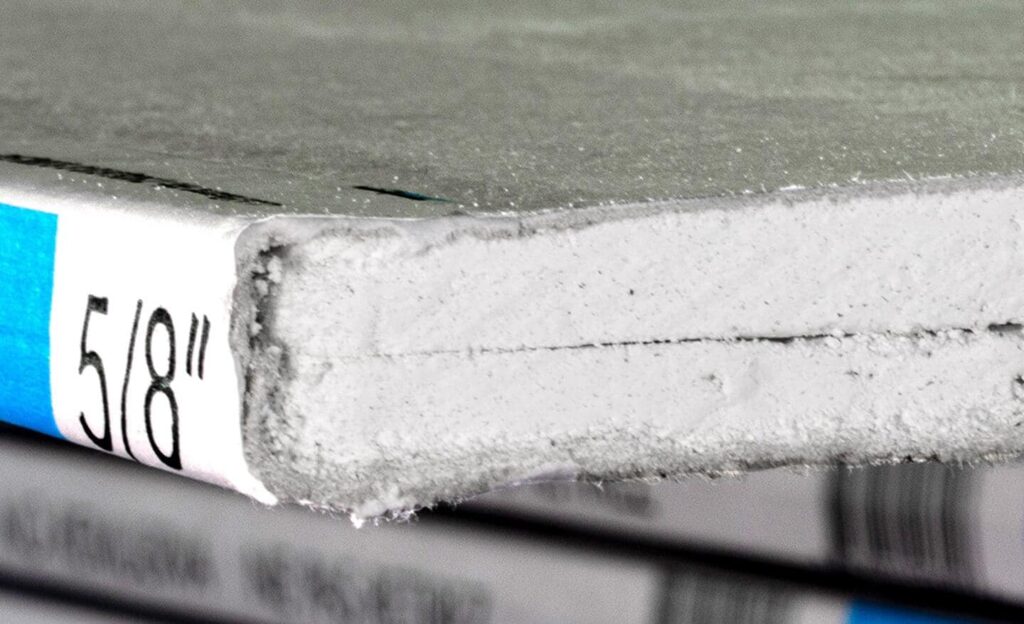
Advanced Techniques for Critical Soundproofing Areas
For areas where noise reduction is critical, such as between floors or in high-noise environments, a more complicated setup might be required. Using spray foam insulation in existing walls can also help reduce sound transmission by filling gaps and creating an airtight barrier. This could involve the installation of an additional wall with a space left air-tight between the existing and new wall, filled with materials like fiberglass or rockwool for added soundproofing. Additionally, employing a noise-proofing compound between layers of plasterboard can create a slight air pocket that further enhances the soundproofing effect by absorbing sound waves more effectively.
Final Thoughts on Spray Foam for Soundproofing
Spray foam insulation is a great choice for soundproofing, excelling in air sealing and making a noticeable difference in noise reduction. While it does an exceptional job blocking higher frequency noises that travel through the air, it is less effective against lower frequency bass sounds, which can still pass through walls fairly easily. To fully prevent low frequency noise, it’s often necessary to increase the mass of the wall or decouple it from the exterior wall. Despite this limitation, spray foam remains a perfect option for enhancing the overall quietness and comfort of your home, providing protection in many ways beyond just soundproofing.
FAQ
Which insulation is best for soundproofing?
For soundproofing, spray foam insulation is among the best options because it effectively reduces noise by creating an airtight seal. Cellulose insulation is another great choice, as its dense structure absorbs sound well, making it perfect for walls and ceilings. Both options ensure a quieter space while addressing specific needs.
Does spray foam insulation help with soundproofing?
Spray foam insulation is one of the best types to install if you want to reduce noise. It not only blocks unwanted noise but also keeps good sounds within the space. This is especially useful when watching a movie, as the sounds are kept inside the room, enhancing your experience.
Is foam good for sound proofing?
Foam alone isn’t good for soundproofing, as it lacks the density to fully stop sound. To create a truly soundproof room, adding an extra layer of 3/4” sheet rock to the ceiling and walls is more effective. This approach enhances sound control significantly.
What is the disadvantage of spray foam insulation?
One disadvantage of spray foam insulation is its environmental damage. It isn’t recyclable and can release greenhouse gases that are 1,000 times more harmful than carbon dioxide. Additionally, it covers gaps completely, which may lead to ventilation issues, causing dampness, condensation, and even wood rot.
